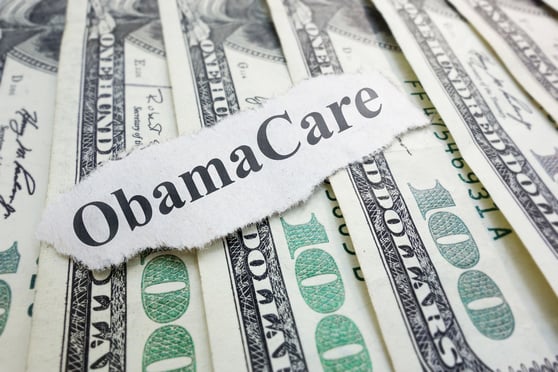Many brokers today remain skeptical that consumer-directedhealth plans will fulfill their promise. But they are missing thepoint: the connection between health and financial security isclear to employers and, increasingly, to their employees.
|Employers without question believe in these plans, judging bytheir rapid growth. Indeed, 61 percent of employers currently offera consumer-directed plan, and an additional 17 percent plan tooffer one next year.[1]
|High-deductible health plans, paired with health savings accounts (HSAs), in particular, are gaining inpopularity. According to a just-released study by America’s HealthInsurance Plans, more than 11.4 million Americans are covered byHSA-eligible plans. That’s an increase of 14 percent over lastyear. Indeed, enrollment has nearly doubled in the past threeyears. HSA-eligible plans have grown because they ease employers’cost burden, offer tax advantages for both employers and employees,and promote preventive care.
|Saving money
|Consumer-directed health plans are generating savings foremployers. Companies with at least half of workers enrolled in sucha plan report average annual costs per employee of nearly $600 lessthan firms without such plans. In fact, employers adding 10 percentor more employees to their consumer-directed plans between 2009 and2010 actually had no increase in costs.[2]
|As for employees, research shows that the annual premium costsfor families decrease by an average of $2,350 for an HSA-eligibleplan compared with a PPO plan, and that the premium savings covernearly 60 percent of the average HSA-eligible plan’sdeductible.[3]Of course, the accumulation of funds in their accounts also helpsemployees offset the higher deductible.
|Improving health
|HSAs are also linked closely to preventive care. Consumers areencouraged to get the care they need - most high-deductible healthplans cover services such as immunizations, screenings, annualphysical examinations and well-baby visits without having to meetthe deductible.Determining whether enrollees in one type of healthplan are healthier than those in other plans is difficult sincethere are so many variables to consider. However, there is aconnection between corporate wellness program effectiveness andconsumer-directed plans. For example, 11 percent of enrollees inconsumer-directed plans are more likely to participate in anexercise program than enrollees in other plans; 43 percent receiveda health screening compared with 30 percent in other plans.[4]
|Some employers are underscoring their commitment to employeehealth by requiring workers to participate in wellness programs inorder to receive employer-paid HSA contributions. An employer inthe southeast, for example, contributes $750 to an employee’s HSA($1,250 for those with family coverage) if the employee completes abiometric screening and online health assessment. Employees thatdon‘t fulfill these requirements receive no contribution.
|Another employer, an insurance company, matches 10 percent ofemployee contributions to HSAs, but only after employees undergo abaseline biometric screening that includes blood pressure, bloodglucose, LDL cholesterol and body mass index.
|The bandits in classic Western films used to hold up thestagecoach with the warning, “Your money or your life.” Itdoesn’t have to be a choice. Brokers who help clients developbenefits programs that connect health with financial well-beingwill have a clear advantage over their competitors.
|Health savings accounts (HSAs) are individual accountsoffered by OptumHealth BankSM, Member FDIC, and aresubject to eligibility and restrictions, including but not limitedto restrictions on distributions for qualified medical expenses setforth in section 213(d) of the Internal Revenue Code. Thiscommunication is not intended as legal or tax advice. Pleasecontact a competent legal or tax professional for personal adviceon eligibility, tax treatment, and restrictions. Federal and statelaws and regulations are subject to change.
|[1] 2011 16th Annual Towers Watson Employer Surveyon Purchasing Value in Health Care
|[2] 2011 16th Annual Towers Watson Employer Surveyon Purchasing Value in Health Care
|[3] The Kaiser Family Foundation and Health Research & Educational Trust 2010 Annual Survey Employer HealthBenefits
|[4] Blue Cross Blue Shield Association, CDHP member experiencesurvey, 2008
Complete your profile to continue reading and get FREE access to BenefitsPRO, part of your ALM digital membership.
Your access to unlimited BenefitsPRO content isn’t changing.
Once you are an ALM digital member, you’ll receive:
- Critical BenefitsPRO information including cutting edge post-reform success strategies, access to educational webcasts and videos, resources from industry leaders, and informative Newsletters.
- Exclusive discounts on ALM, BenefitsPRO magazine and BenefitsPRO.com events
- Access to other award-winning ALM websites including ThinkAdvisor.com and Law.com
Already have an account? Sign In
© 2024 ALM Global, LLC, All Rights Reserved. Request academic re-use from www.copyright.com. All other uses, submit a request to [email protected]. For more information visit Asset & Logo Licensing.








